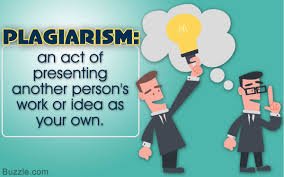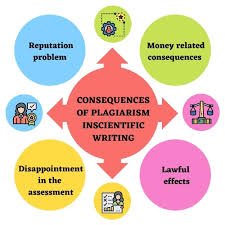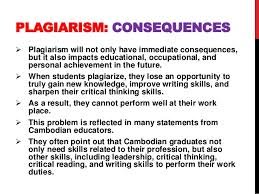ACHIEVEMENT 3 by @gentlejenny Task: CONTENT ETIQUETTE
There is no new thing under the sun.
That was true then, in the days of stone tablets. It was true when Shakespeare was writing his sonnets. And it’s most definitely true now, in the age of the internet.
source.
That brings us to my ACHIEVEMENT 3 TASK: Content Etiquette.
Originality should be every writer's pride. It should be every writer's watchword. In a world dominated by access to information through the social media, it becomes almost a recurrent decimal how people copy other people's works and claim ownership without acknowledging the original owner.

This brings us to the issue of PLAGIARISM which means the practise of taking someone else's work without given them credit.
This act in not only unprofessional, it is also unethical and should be avoided if one must thrive as a writer. There is nothing as embarrassing as reading a story supposedly written by someone only to realise the write up belongs to another without acknowledgment. That is plagiarism and this should be discouraged in every ramification.
An article by Copyleaks posted online in 21st October, 2019 mentioned four types of Plagiarism;
1.Direct Plagiarism
2.Mosaic plagiarism
3.Self-plagiarism
4.Accidental plagiarism.
Direct plagiarism: This involves adopting parts from the writing of another writer without proper mention of the source.
Mosaic plagiarism: In this case, the plagiarist may have mentioned the source of the content he has referred to. But if he/she does not acknowledge the quoted part or put them under quotation marks correctly, then the writer commits the crime of plagiarism.
Self-Plagiarism: This is the most common type of plagiarism, where someone copy and paste part of a previously submitted paper by him or her.
Accidental Plagiarism: This is when the plagiarist misquotes the phrases or parts of the tests he or she has taken from the source material or does not cite the source or adequately cites a wrong source.
There are ways one can avoid plagiarism. One of the ways is quoting.
Quoting should be used when copying an author's work directly from the source. A writer can quote another writer to add colour and glitz to his own write up or support his points. In this instance it behoves the writer to quote the source.
Another way is paraphrasing: Unlike quoting, paraphrasing means rephrasing an author's own words. This means reworking an author's ideas, words and sentence structure with your own words.
Summarizing: This means putting the main ideas of several writers or author into your own words. It is usually shorter and more concise than the original source material, hence should be carefully used to avoid plagiarism.

"I have read and understood the Steemit Etiquette on Steemit Community and will do my best to embrace them"
Thanks to @xkool24 for the continuous support and the steemit newcomers greeters for the prompt response in approving my ACHIEVEMENT 1 and 2.

Congratulations!
You have passed Achievement 3 on Content Etiquette. Understanding the concept of Plagiarism is very important on the steemit platform.
Rating: 2
Please get ready for the next task on Achievement 4: Applying Markdowns Link You expected to use some advance markdown tags using some of the given markdown templates.
Thanks @fombae for the prompt response i will get to work immediately on my next task.
Hi, @gentlejenny,
Your post has been supported by @rypo01 from the Steem Greeter Team.
Thank you @steemcurator03 and @rypo01 i appreciate